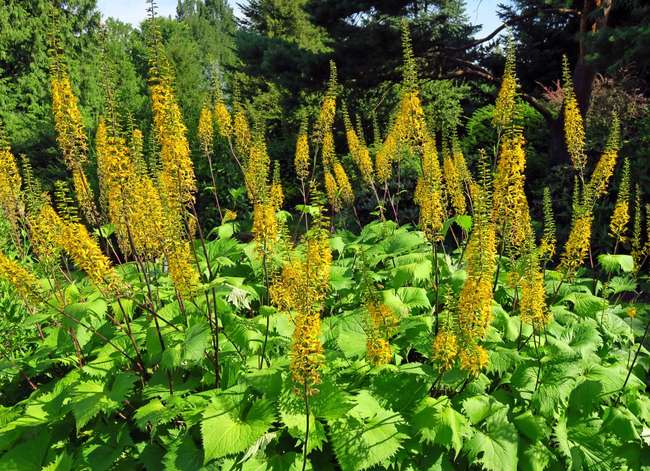

We may earn revenue from the products available on this page and participate in affiliate programs. Learn More ›
Home Advice You Can Trust
Tips, tricks & ideas for a better home and yard, delivered to your inbox daily.
Tall and Handsome
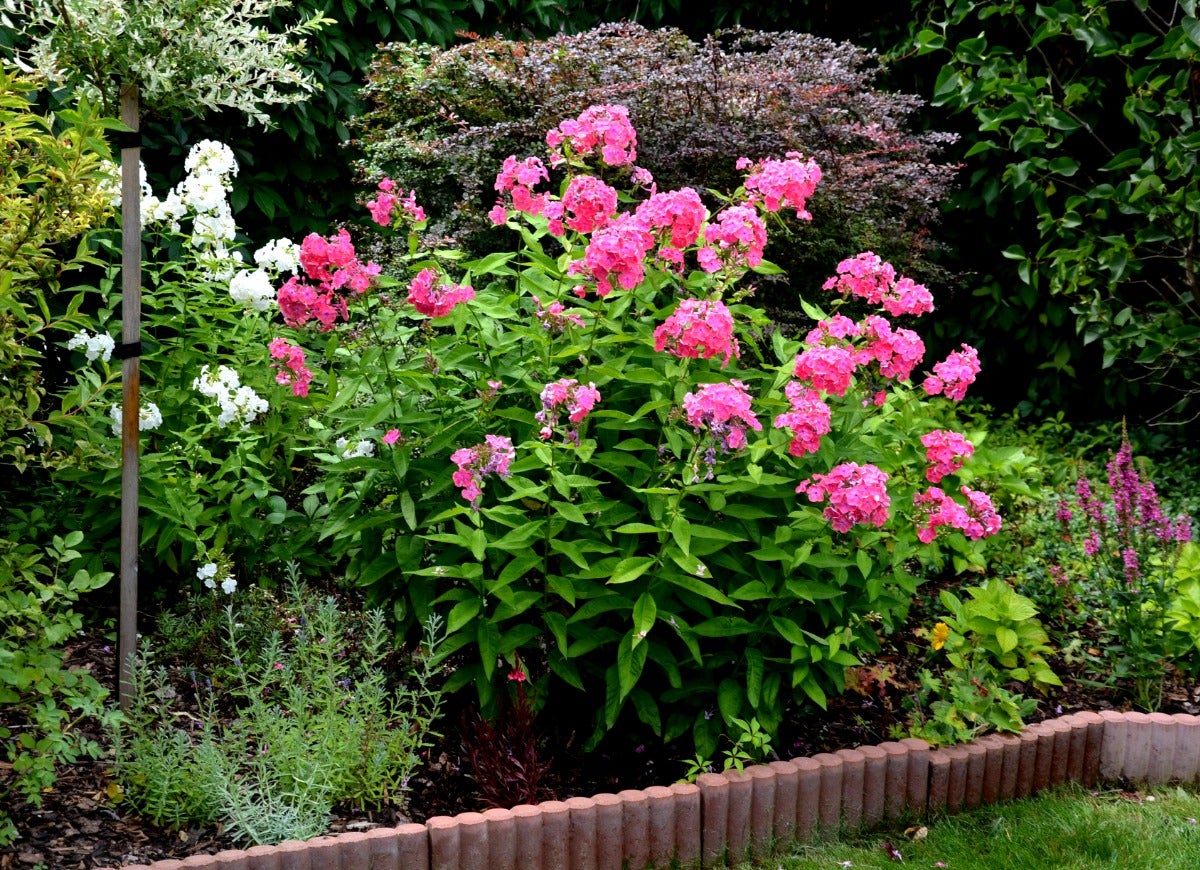
Like the lanky heroes or statuesque heroines of Hollywood, tall plants command attention—and can steal the spotlight (or the sunlight, as the case may be) from others around them. For this reason, you’ll want to set them at the back of a garden bed or plant them alone so they don’t cast all your other flowers in the shade.
One of the best reasons to plant tall plants on your property is that they’re great for concealing less appealing features of your landscape. Just as such plants once were used to camouflage outhouses, they can hide that rusty chain link fence around the dog run or your neighbor’s messy yard. This slideshow includes a variety of annuals, biennials, and perennials—some edible as well as ornamental—that can reach 6 feet or more.
Canna (Canna x generalis)
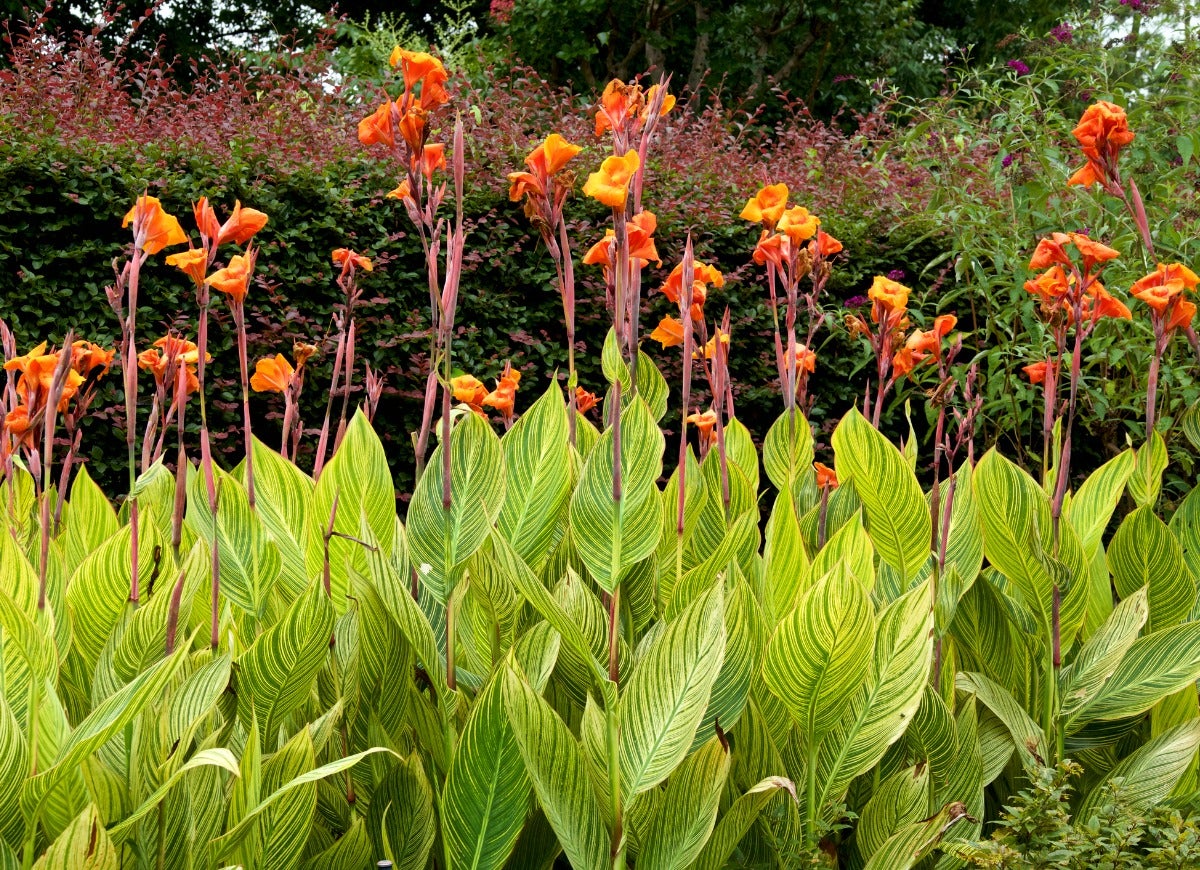
Popular for their tropical vibe, canna hybrids virtually vibrate with color thanks to their bright blooms and often striped or variegated leaves. Except for dwarf types, cannas typically grow from 3 to 8 feet in height and prefer rich, well-watered soil and full sun. They are hardy in USDA zones 7 and higher, but must be mulched in zone 7. In zones 1 through 6, however, canna rhizomes should be dug up in the fall, overwintered indoors, and replanted in late spring.
Cardoon (Cynara cardunculus)
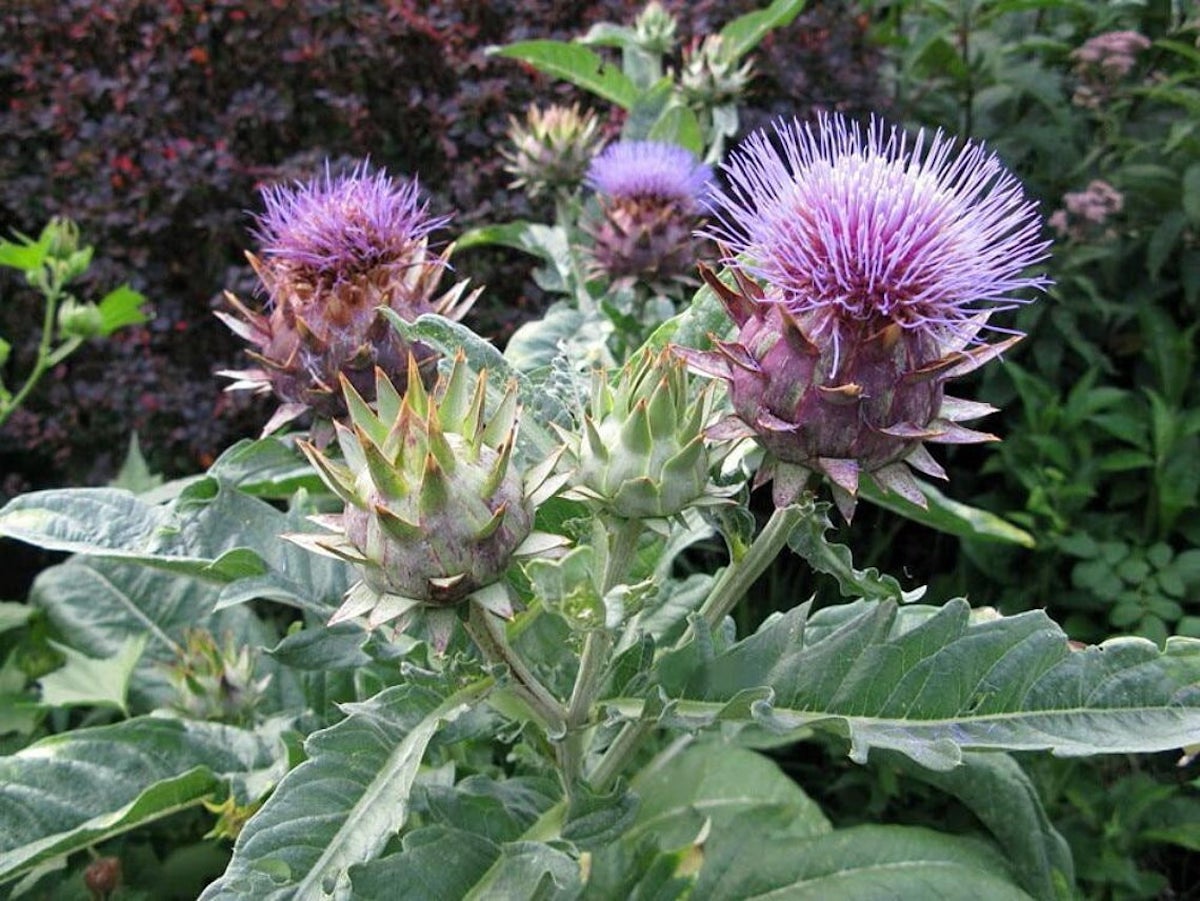
Sometimes considered the bitter little brothers of globe artichokes, thistly cardoons needn’t get prickly about the comparison. Though their 3-inch purple blooms are smaller than those of artichokes, cardoons actually can grow taller (at 8 feet) than artichokes do, with rosettes of showy and spiny gray-green leaves. Cardoons’ stalks, not the flower buds, are edible but must be blanched before eating. Preferring full sun and fertile soil, cardoons are perennial in USDA zones 7 through 10.
Castor Oil Plant (Ricinus communis)
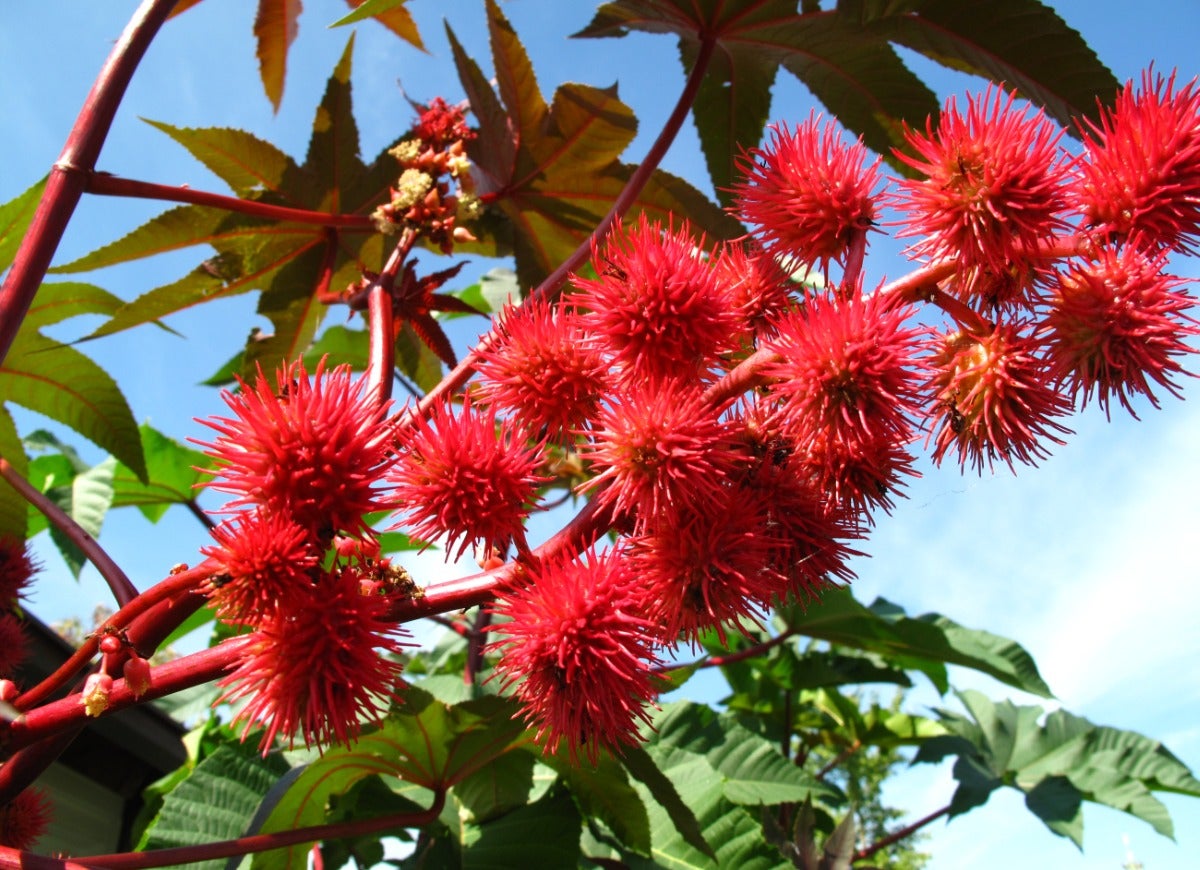
Given lots of sun and rich soil, the castor oil plant can shoot up to 15 feet tall over the course of one summer, and grow lobed leaves 3 feet across. Hardy only in USDA zones 9 through 11 and usually grown as annuals, some cultivars produce maroon or purple foliage with prickly clusters of seed pods that often glow scarlet. Snip those red-for-danger pods off early if you have children or pets, since castor beans are highly toxic.
Cutleaf Coneflower (Rudbeckia laciniata)
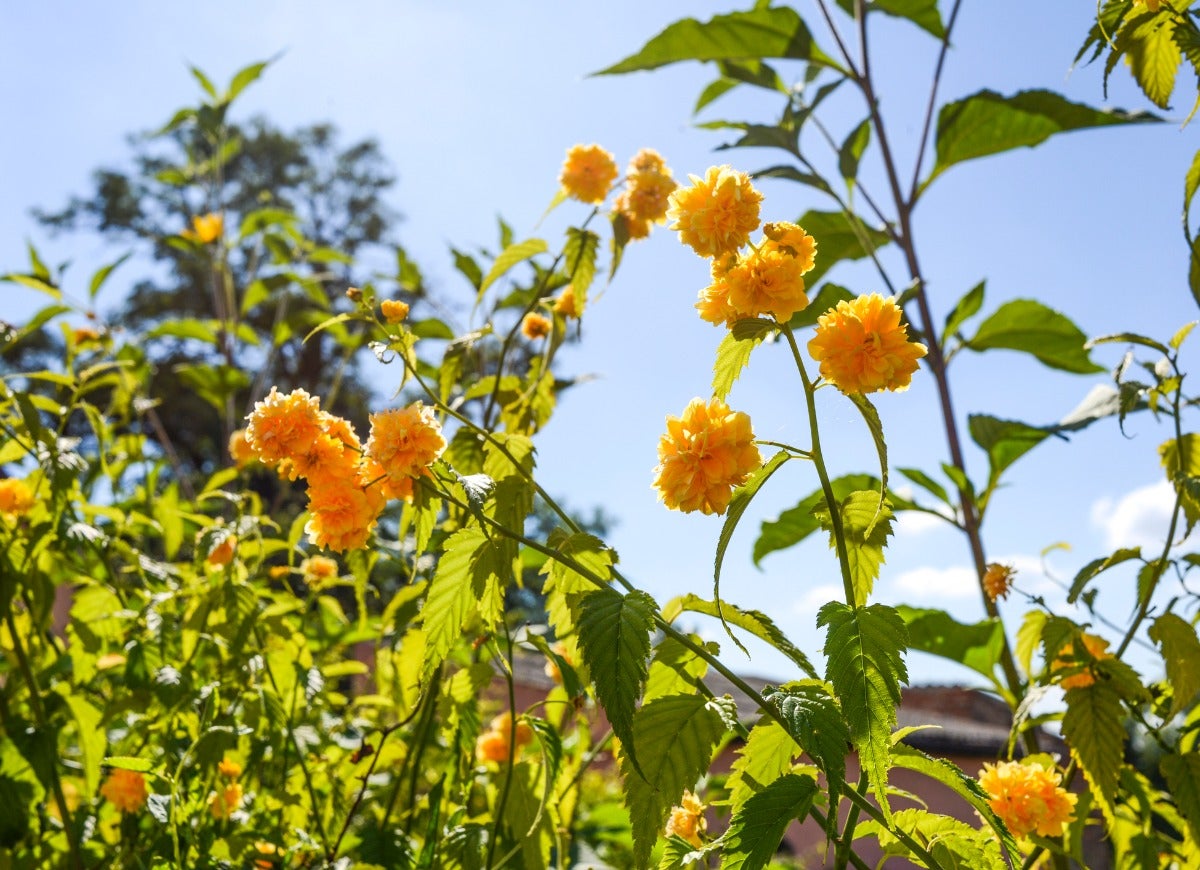
Although rudbeckias usually don’t attain exceptional heights, lacinata cultivars such as the perennial double-flowered Hortensia, or Golden Glow, can reach heights of 10 feet. Along with hollyhocks, cutleaf coneflowers used to be popular picks for outhouse beautification in USDA zones 3 through 10. This species blooms from mid- to late-summer in full sun or partial shade, and needs just average soil and water to flourish.
Delphinium (Delphinium elatum strains)
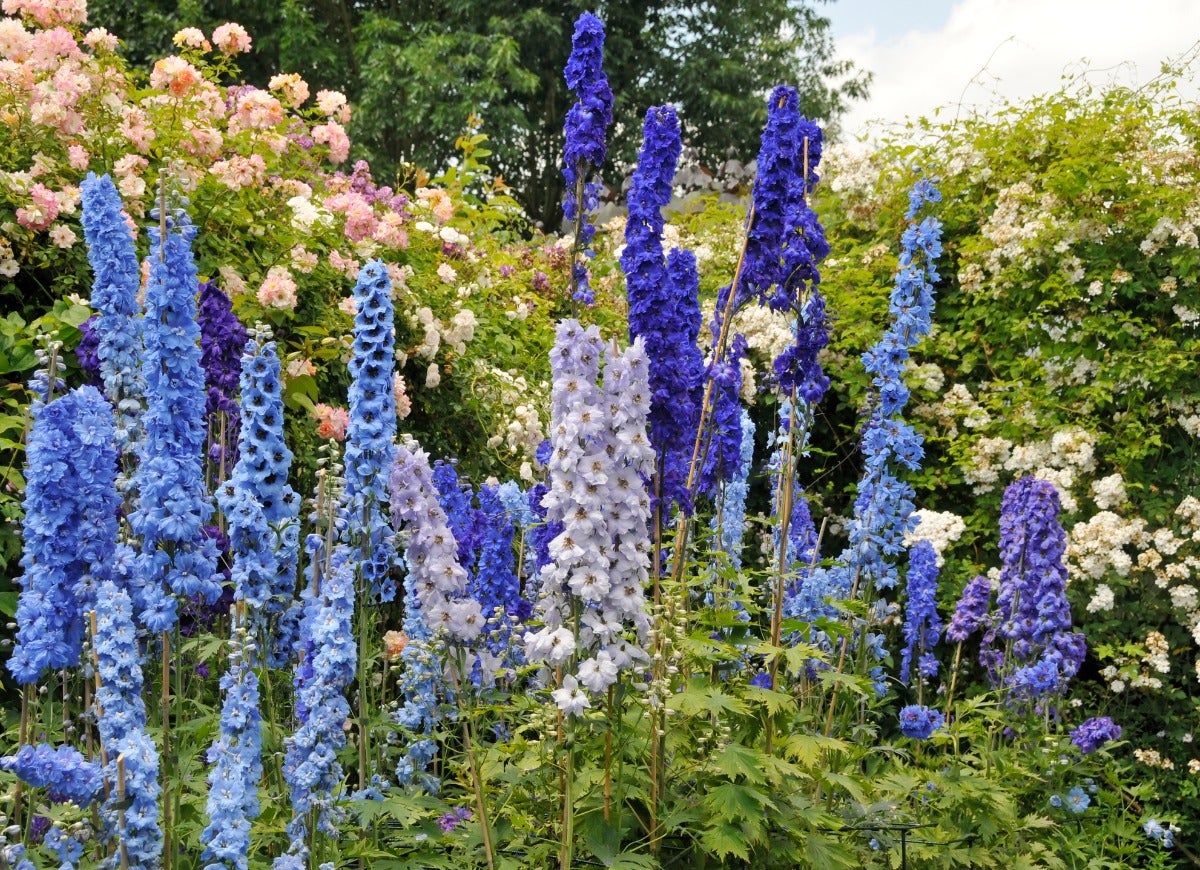
Among the rare true blue plants—those which produce genuinely blue rather than purple flowers—delphiniums are spires of blooms with furry “bees,” or centers. Those flowers aren’t always blue, though, but come in shades of white pink, and purple too. When planted in rich soil in cool-summer climes, they can grow up to 8 feet tall. Delphiniums aren’t as picky about light and thrive in both sun and partial shade. They are toxic to people and animals, though—gardeners with children or pets may want to plant less dangerous blooms.
Foxglove (Digitalis purpurea)
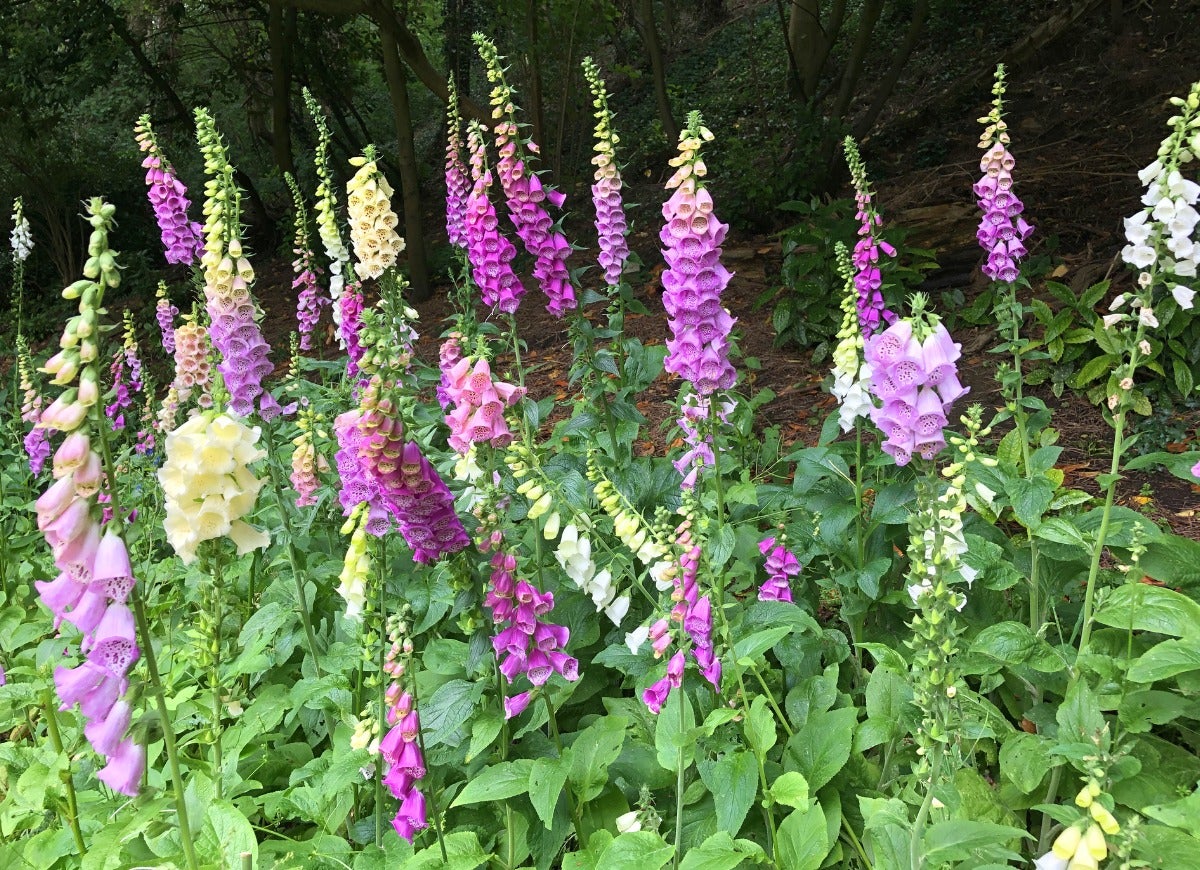
With stalks of beauty-spotted flowers shaped as if to cup fingertips, these biennials can grow to 6 feet and add svelte glamour to a well-drained shade garden. Grown in USDA zones 5 through 10, foxgloves don’t like excessive heat. Though chemicals from these floral femme fatales are the source of the heart medicine digoxin, the plant is highly toxic. Foxgloves aren’t a good choice for families whose young children may want to play with those fingertip-fitting blooms.
Hibiscus (Hibiscus moscheutos)
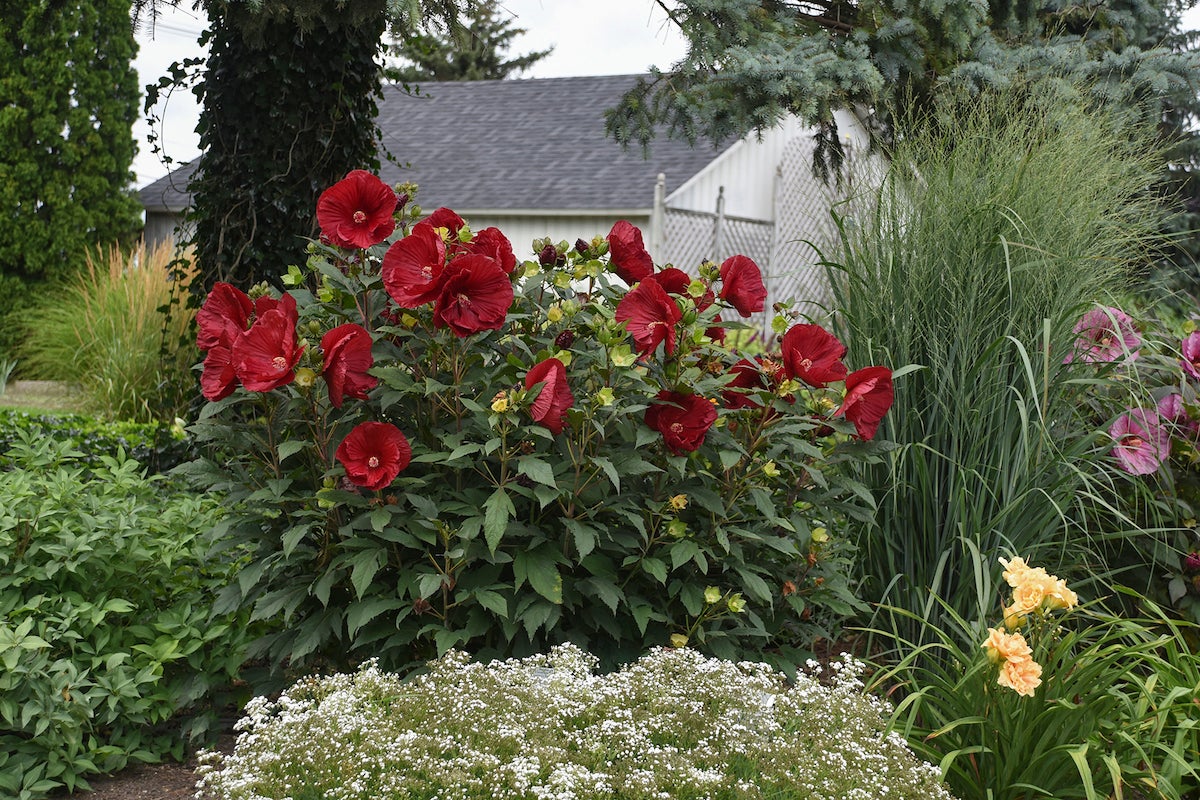
Growing up to 8 feet tall with flowers the size of dinner plates, perennial hibiscuses aren’t wallflowers or shrinking violets. For gardeners who prefer stunning to subtle, these plants suit the bill if they’re given full sun and slightly acidic soil. Perennial in USDA zones 5 through 9, hibiscus plants are usually slow to emerge from their winter hibernation at the colder end of that range. In cooler climes, the plants generally bloom in late summer, but they can bloom all summer in warmer zones.
Hollyhock (Alcea rosea)
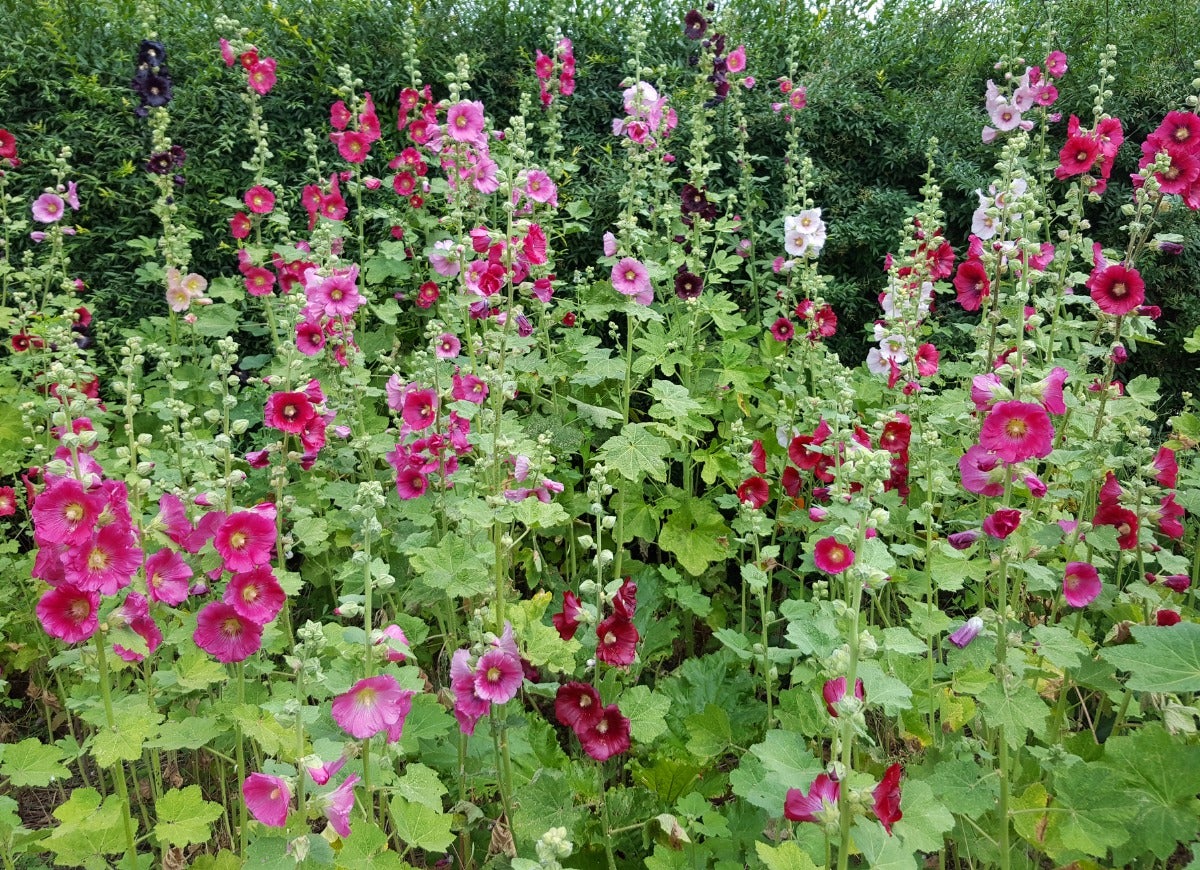
Hollyhocks aren’t hollies, nor are they as widely hawked as they once were when used as pretty screens for outhouses. Still, these charming old-fashioned biennial cousins to hibiscus can reach 9 feet in height in USDA zones 4 through 10, stacking 3 to 6-inch single or double flowers into towers of blooms. They prefer full sun, protection from wind, and soil that’s on the heavy side to keep them upright.
Red Hot Poker (Kniphofia spp.)
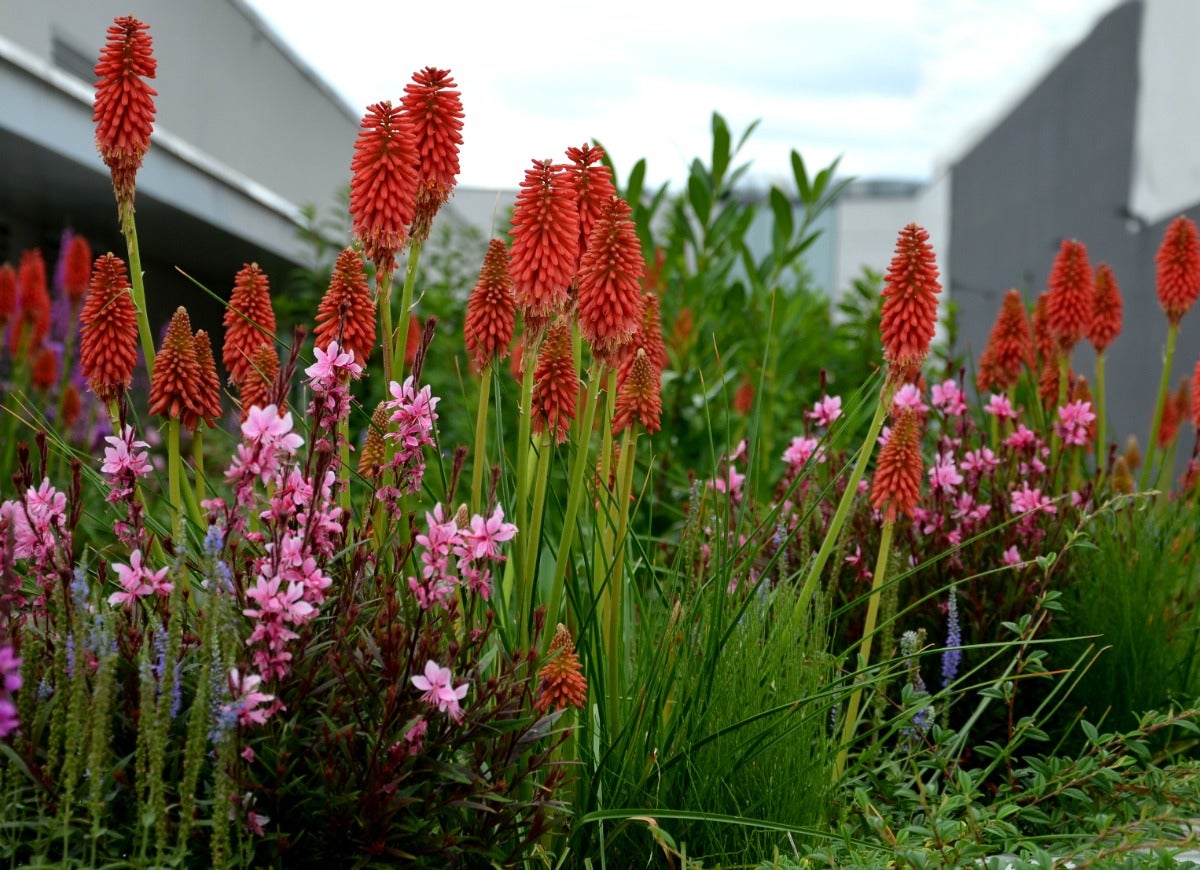
Cylindrical spikes composed of tubular flowers, this plant’s pokers look as if they have been thrust into smoldering embers, its spikes often glowing red at the tip and white-hot lower down. They “poke” up from grassy foliage, with some species reaching a height of 6 feet. Except for uvaria, which is hardy to USDA zone 5, most red hot pokers only are perennial in zones 7 through 10. They prefer full sun and well drained soil.
Sunflower (Helianthus annuus)
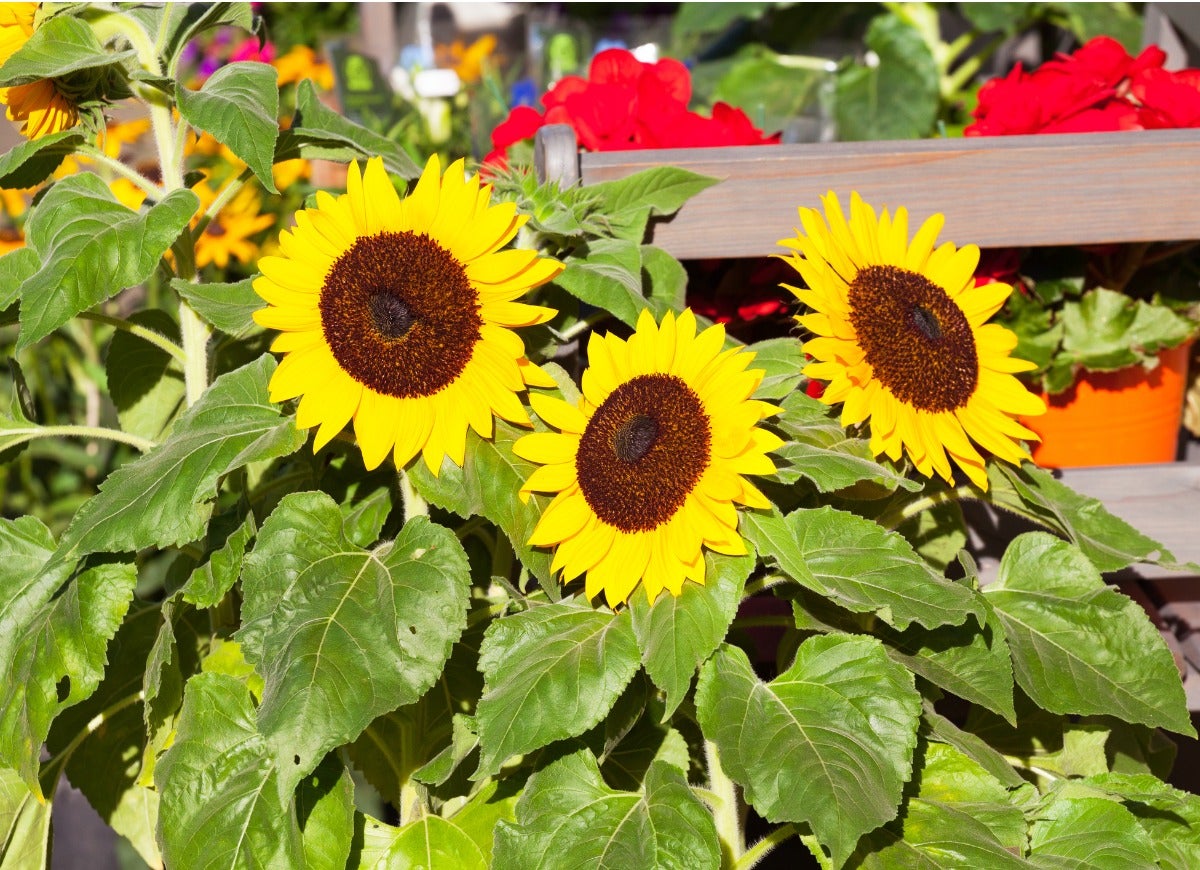
Annual sunflowers reach for the sun, whose beaming face their large and often yellow blooms appear to mirror. Like castor bean plants, the tallest sunflower cultivars are capable of growing to 15 feet in one summer with flowerheads that are up to 1 foot across. Naturally, they prefer a location in full sun and out of the wind, along with plenty of water. Frequently grown at the back of vegetable gardens, the plants produce oil-rich seeds that can provide healthy snacks both for gardeners and the wild birds they feed.
Tall, bright and beautiful
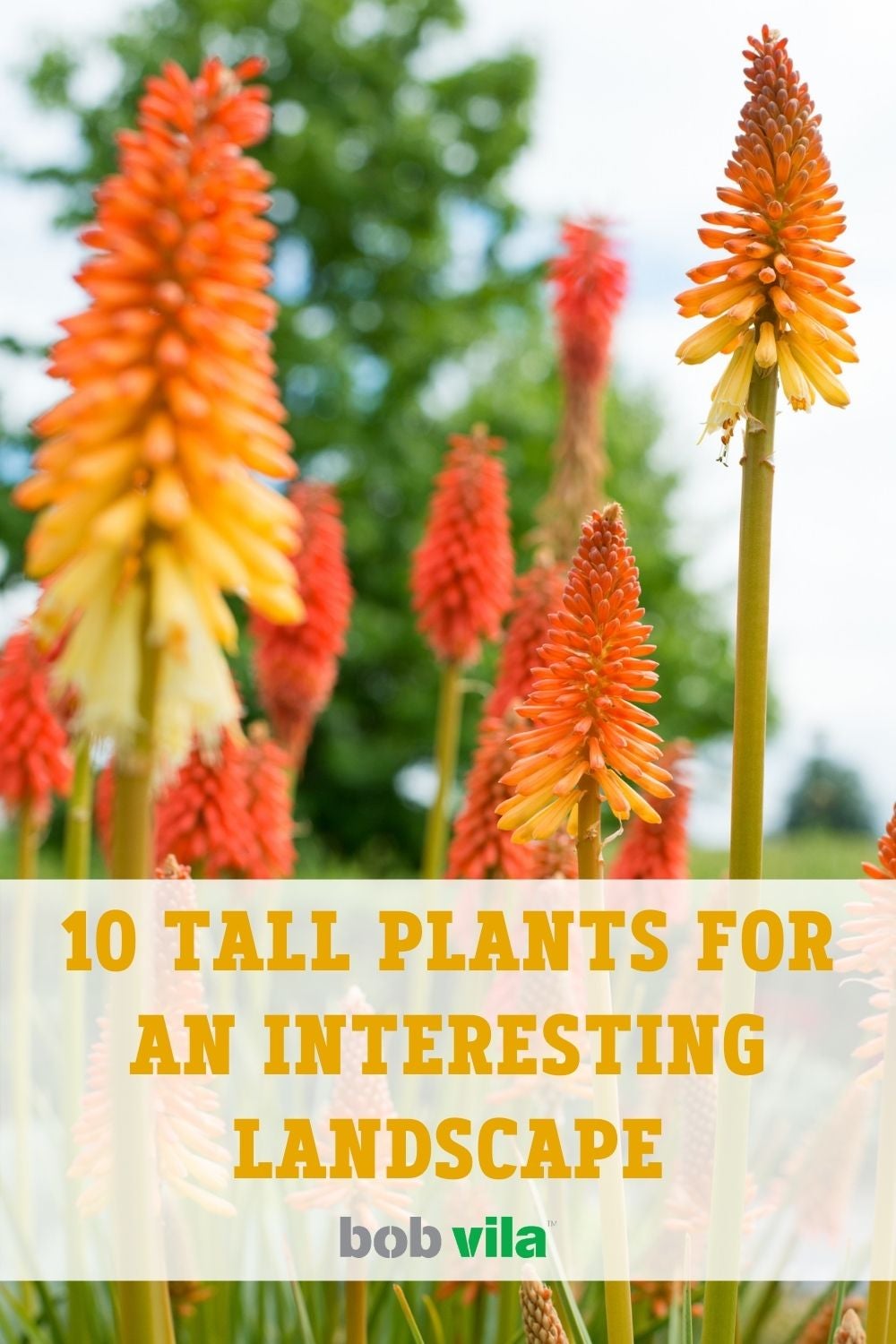
It’s time to steal the spotlight in the neighborhood and add these beautiful tall flowers to your front or backyard. Your garden will thank you later!

The Homeowner Survival Kit
This year’s Bob Vila Approved is a hand-picked curation of tested, vetted, must-have essentials for surviving homeownership today.